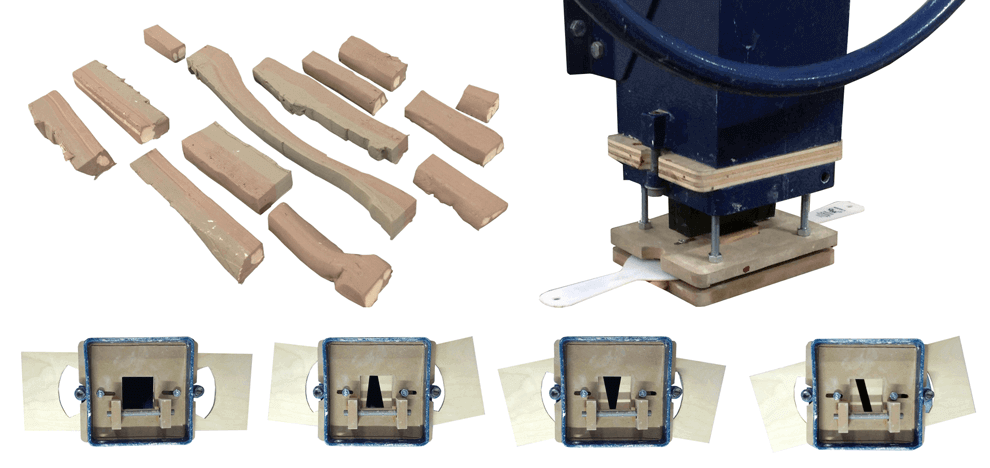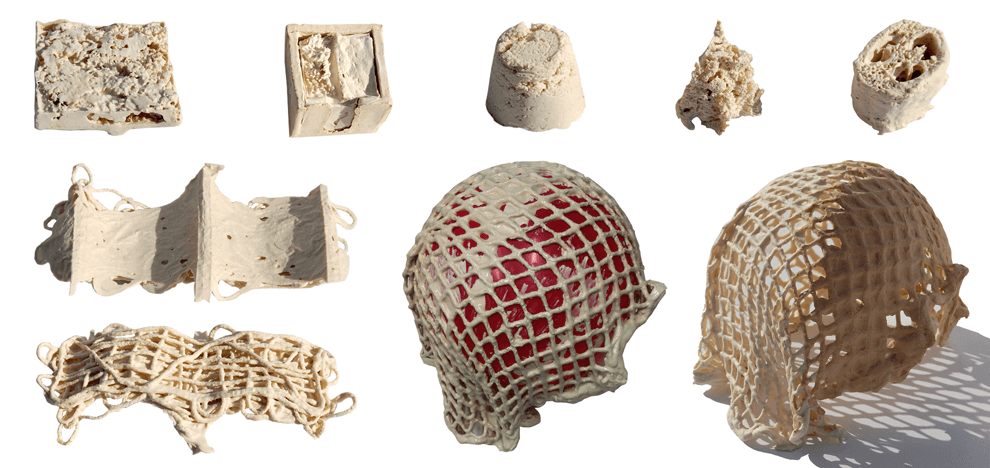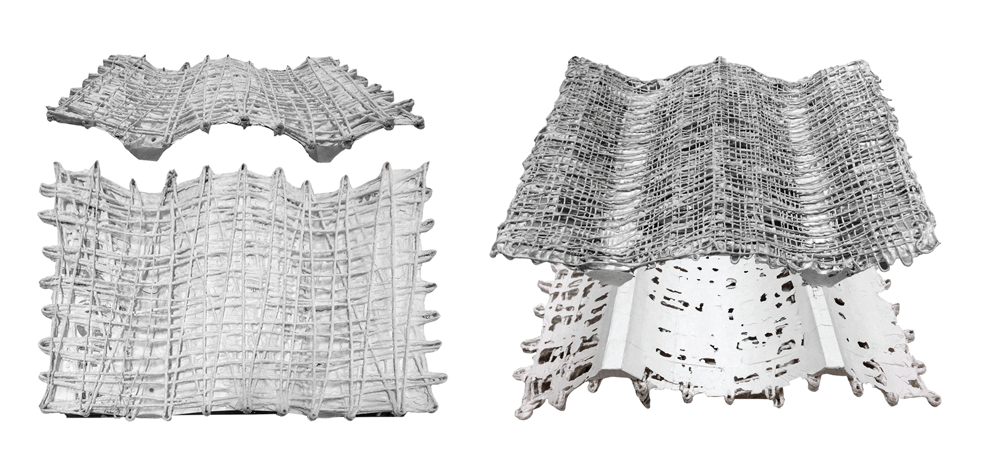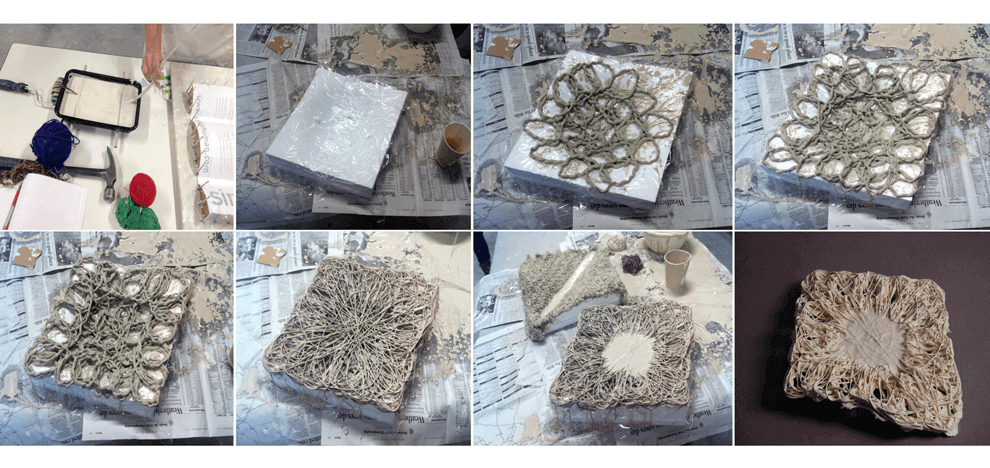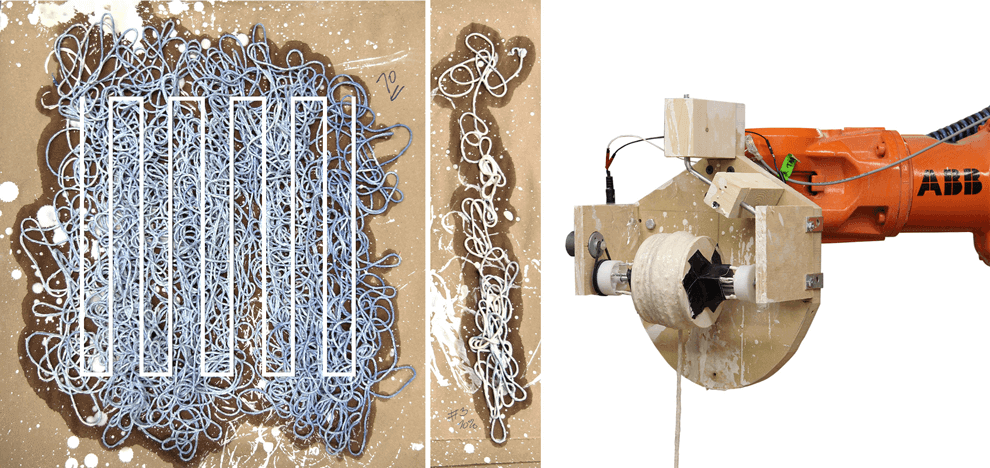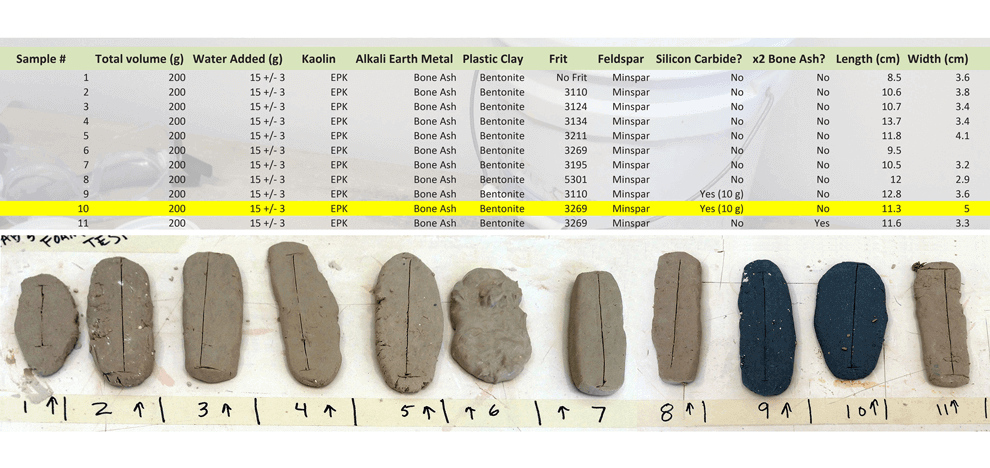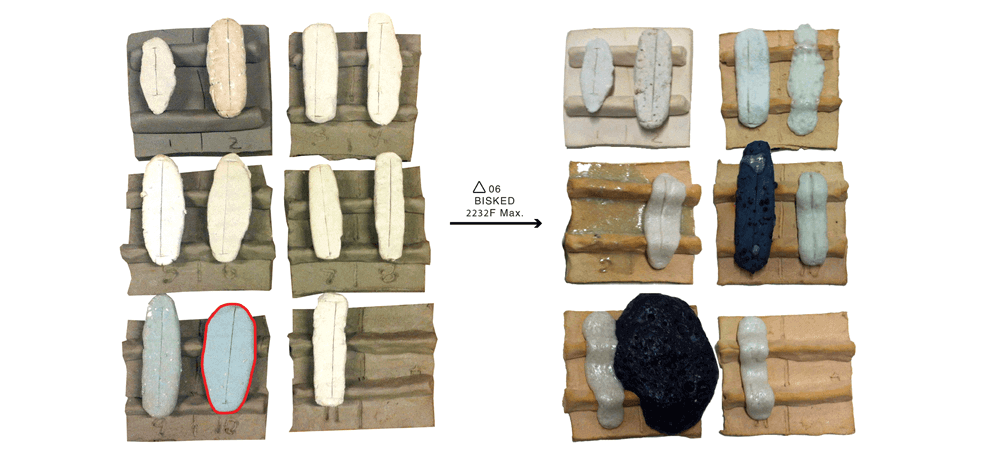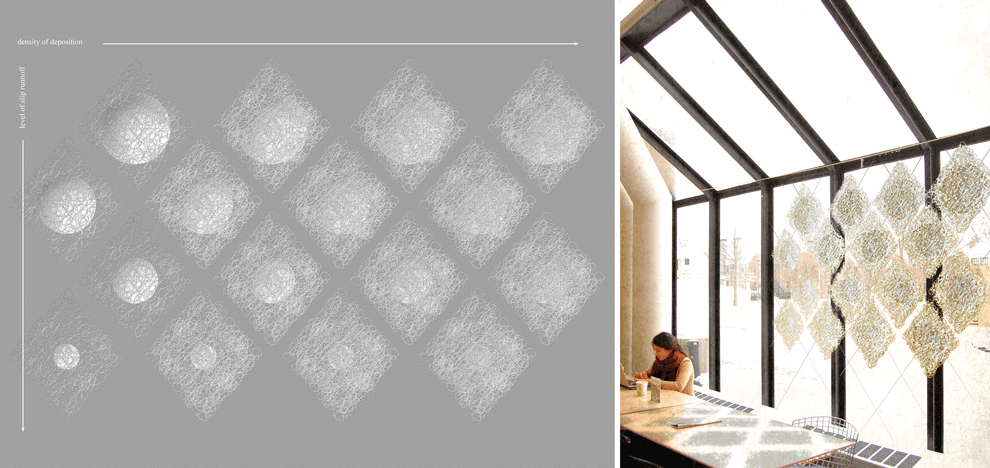Additive Ceramics
Due to its malleability and variable states, clay has the ability to take on multiple shapes and functions. Relatively little research exists on the use of scaffold materials to shape liquid clay. This project focuses on the use of scaffold and mold as well as chemical additive within the clay body itself to create variably porous ceramic panel. The process uses a form of additive manufacturing to produce a performative ceramic unit. Using slip-coated fiber as a medium, patterns are laid over foam forms, the varying depths in which allow for slip run-off to collect and form structural points within the self-supporting panel, once dried and fired. Digital fabrication methods reveal a new set of parameters (controlled and variable) within each panel. Paradoxically, digital tools reveal the unpredictability of clay as a material and the opportunities for customization despite fixed controls on the major performative parameters. How can we create a variably porous, self-supporting panel using ceramic materials? How might this panel be customizable or replicable through digital fabrication methods?
This question is approached at two scales. First, at the macro scale, formal porosity was tested using a scaffold and a mold both manually and finally through robotic processes. Second, material porosity was examined through several alterations of the composition of the clay body. The breadth of clay material was explored in both its liquid and solid form. Burnout tests fell into two categories: Test 1 applied cone 6 porcelain slip onto a structural scaffold and Test 2 introduced a burnout additive into a bath of cone 6 porcelain slip. Within Test 1, structural scaffolds, sponges were tested , paper and string or fiber impregnated with slip. The slip covered fiber was draped over an inflatable form while drying to give it shape. This form was removed before firing. In Test 2, burnout additives, granular materials were tested such as coffee, popcorn, foam peanuts, wood dowels, sponges and rice. The additives were mixed into a small volume of liquid slip and contained either within a permanent structure of clay to be fired with the slip or a temporary plastic container. Strength in panels was directly related to the shape of the models used, the type of scaffold used, the pattern chosen for the scaffold, and whether the panel was glazed after firing it to bisque. Two aspects of strength were noted: the ability of the solid elements to produce a self-supporting panel and the ability of the lightweight porous sections to tie between these structural elements. The pattern of the string deposition determines the porosity of the panel. Several factors within the pattern --namely number of layers and degree of overlap-- affect porosity and strength inversely. The pattern was also manipulated to achieve different visual effects. Other factors such as amount and tautness of string played a role in the testing but were not rigorously controlled. While the robot can be programmed to execute an infinite array of paths, the resulting string depositions were highly self-regulating and responded directly to the weave of the string. Thus, a constant grid pattern was used in order to focus on the impact of other variables.
The speed of movement directly determined the pattern and density of deposition. Higher speeds produce a higher density and pattern containing more ‘swirls’, a result of the natural un-twisting and coiling of the string, with smaller radii while lower speeds produce less swirls with bigger radii. After many iterations of a robotic tool a gravity fed system proved to be the most effective. An optimum height was determined though the required weight of the string needed to prevent a back feed. Since the slip coated string is sticky there is a tendency for the string to stick to itself and not dispense. The amount of string deposited is the final factor controlling the porosity of the panel. The final phase of the project was focused on creating and testing a clay mixture that foams to > 200% its size during kiln firing. The goal was to integrate this foaming clay into the panel in order to see a micro level porosity while retaining structural integrity. The concept was inspired by the “Foam China” exhibition at the European Ceramic Work Center, but it was necessary to optimize the clay mixture’s ingredients based on the materials available. In an original study by van Aubel hydroxyapatite powder was used as a key additive to activate the foaming reaction. The prohibitively high cost of granulated hydroxyapatite led to substituting it by other additives, such as silicon carbide and bone ash (chemically similar to hydroxyapatite).
Eleven preliminary tests were conducted to optimize the extent of the foam volume; nine of the tests used different types of frit, each with a unique chemical composition. One test used no frit, and the final one included silicon carbide as an additional additive. All of the samples incorporated plastic clay (bentonite), kaolin (EPK), feldspar (minspar), bone ash, and water. The specimens were fired to cone 06 bisque and cone 6 to achieve a strong, glass-like texture. Taken altogether, the experiments in manual testing, robotic deposition and foaming clay composition, show exciting potential for new methods in additive manufacturing. In particular, controlled porosity has been achieved using both liquid clay applied to burnout scaffolds at a macro scale while the development of a foam clay body performs the same at a micro scale. The robotic application unlocks the properties of the thread and creates a pattern that is irreproducible by the human hand. Additionally, even when applying this deposition from a precisely controlled robotic pathway, a unique pattern is produced through every pass. These results have implications for a production of customization that has fixed inputs (controlling performative aspects) and variable outputs. Finally, a foaming clay body has been explored, but yet to be successfully incorporated into the panel design. More research is necessary to understand the behavior of the foaming clay and its applications.

